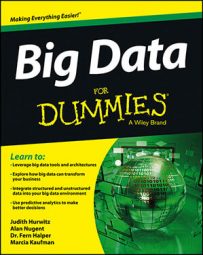Security and privacy requirements, layer 1 of the big data stack, are similar to the requirements for conventional data environments. The security requirements have to be closely aligned to specific business needs. Some unique challenges arise when big data becomes part of the strategy:
Data access: User access to raw or computed big data has about the same level of technical requirements as non-big data implementations. The data should be available only to those who have a legitimate business need for examining or interacting with it. Most core data storage platforms have rigorous security schemes and are augmented with a federated identity capability, providing appropriate access across the many layers of the architecture.
Application access: Application access to data is also relatively straightforward from a technical perspective. Most application programming interfaces (APIs) offer protection from unauthorized usage or access. This level of protection is probably adequate for most big data implementations.
Data encryption: Data encryption is the most challenging aspect of security in a big data environment. In traditional environments, encrypting and decrypting data really stresses the systems’ resources. This problem is exacerbated with big data. The simplest approach is to provide more and faster computational capability. A more temperate approach is to identify the data elements requiring this level of security and encrypt only the necessary items.
Threat detection: The inclusion of mobile devices and social networks exponentially increases both the amount of data and the opportunities for security threats. It is therefore important that organizations take a multiperimeter approach to security.
So, physical infrastructure enables everything and security infrastructure protects all the elements in your big data environment. The next level in the stack is the interfaces that provide bidirectional access to all the components of the stack — from corporate applications to data feeds from the Internet.
An important part of the design of these interfaces is the creation of a consistent structure that is shareable both inside and perhaps outside the company as well as with technology partners and business partners.
For decades, programmers have used APIs to provide access to and from software implementations. Tool and technology providers will go to great lengths to ensure that it is a relatively straightforward task to create new applications using their products. Although very helpful, it is sometimes necessary for IT professionals to create custom or proprietary APIs exclusive to the company.
You might need to do this for competitive advantage, a need unique to your organization, or some other business demand, and it is not a simple task. APIs need to be well documented and maintained to preserve the value to the business. For this reason, some companies choose to use API toolkits to get a jump-start on this important activity.
API toolkits have a couple of advantages over internally developed APIs. The first is that the API toolkits are products that are created, managed, and maintained by an independent third party. Second, they are designed to solve a specific technical requirement.
Big data challenges require a slightly different approach to API development or adoption. Because much of the data is unstructured and is generated outside of the control of your business, a new technique, called Natural Language Processing (NLP), is emerging as the preferred method for interfacing between big data and your application programs.
NLP allows you to formulate queries with natural language syntax instead of a formal query language like SQL. For most big data users, it will be much easier to ask “List all married male consumers between 30 and 40 years old who reside in the southeastern United States and are fans of NASCAR” than to write a 30-line SQL query for the answer.
Because most data gathering and movement have very similar characteristics, you can design a set of services to gather, cleanse, transform, normalize, and store big data items in the storage system of your choice.
To create as much flexibility as necessary, the factory could be driven with interface descriptions written in Extensible Markup Language (XML). This level of abstraction allows specific interfaces to be created easily and quickly without the need to build specific services for each data source.
In practice, you could create a description of SAP or Oracle application interfaces using something like XML. Each interface would use the same underlying software to migrate data between the big data environment and the production application environment independent of the specifics of SAP or Oracle. If you need to gather data from social sites on the Internet, the practice would be identical.
Describe the interfaces to the sites in XML, and then engage the services to move the data back and forth. Typically, these interfaces are documented for use by internal and external technologists.

